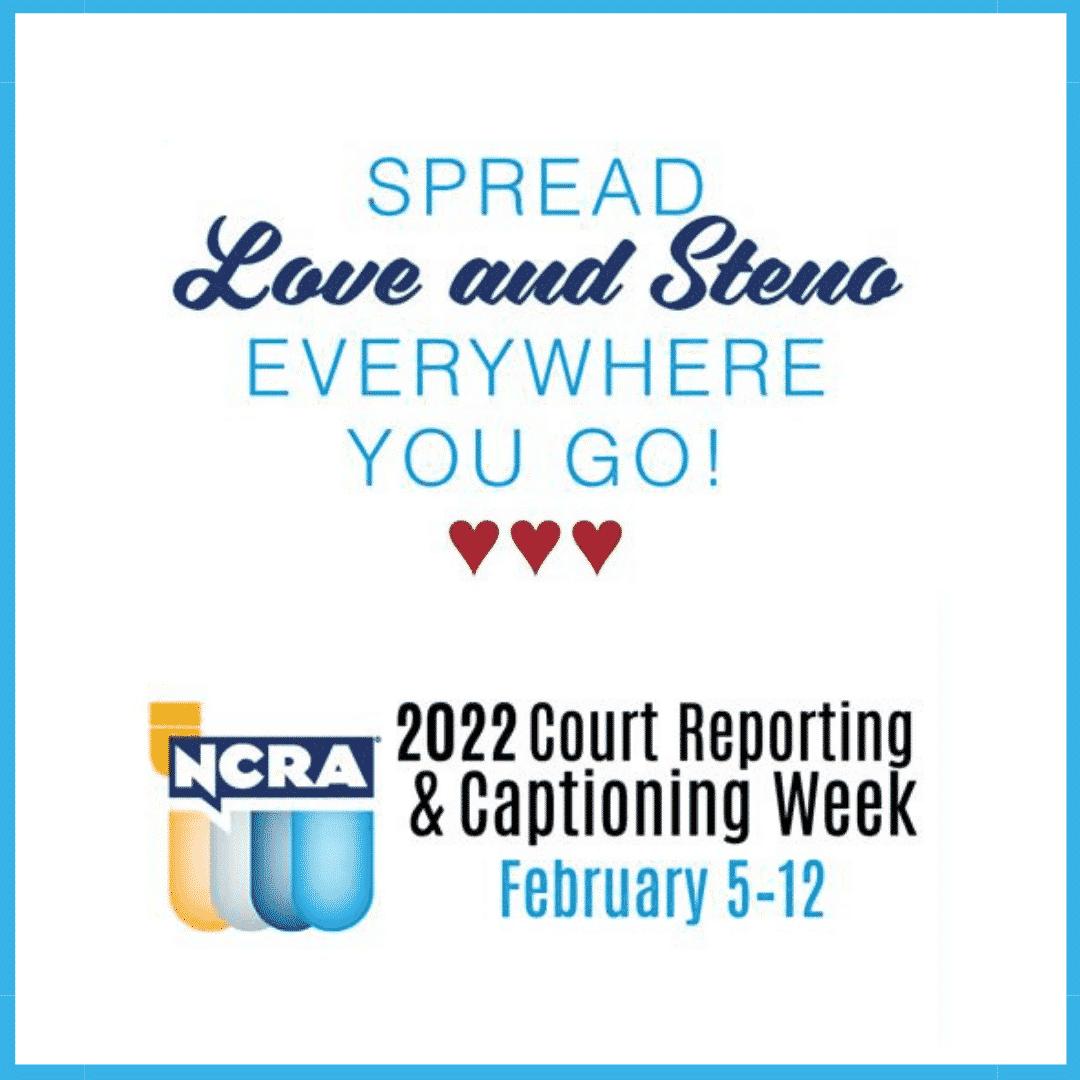February 5th through 12th marks the 10th annual Court Reporting & Captioning Week, and VITAC is taking the opportunity to celebrate! It’s a great time to recognize the amazing work our captioners do as well as the people their work benefits.
Established by the National Court Reporters Association, Court Reporting & Captioning Week drives home the importance of ensuring the spoken word is accessible for those who are deaf and hard of hearing as well as the critical need for accurate, complete captions and transcripts.

For many, accessing captions is now as simple as pressing a button on a remote or enabling an option on an app’s menu, but the process of creating captions, especially realtime captions, like those required for live television, live events, or court reporting, is a highly specialized skill.
Some realtime captioners and all court reporters use special devices called a stenography (or steno) machine consisting of 22 keys, as opposed to the usual QWERTY keyboard most in the US know. Fewer keys might seem odd until you realize that the keys type syllables instead of single characters which helps them to write at an average of 250 words per minute, leaving most Mavis-Beacon score standards in the dust.
Learning to use a steno keyboard is almost like learning a different language or a new musical instrument. Those who already possess good listening, typing, and grammar skills will certainly have an advantage, but at the end of the day, practice, practice, and more practice is what will ensure the skill and speed levels needed for success in live scenarios.
Other realtime captioners use voice-captioning software, a method that utilizes a combination of speech recognition engines and the type of listening and quick-decision-making skill required in steno captioners. Just as steno captioning is a highly specialized skill, voice captioning requires highly developed training and experience. Voice captioners are trained to listen to live broadcasts and events and essentially “respeak” the words to be recognized by their software. Voice captioners essentially have to listen as they speak in order to provide live captions.
Additionally, voice captioners train with their individual program to ensure that the software is specifically tailored to the individual’s unique voice and speech patterns. This highly customized approach is what makes trained human voice captioners outstrip most standalone automated speech recognition (ASR) options.
Offline captions (those created for prerecorded programs) are created by highly trained professionals who listen to the program audio and transcribe words, sound effects, and music to give viewers a full sense of what is happening in the program’s audio track. Offline captions are timed to sync with the program audio, and placed to match the speakers on the screen.
Offline captioners, however, are not just good transcribers and spellers. They’re experts in their craft and masters of description, line breaks, timing, readability, sound effects, and common style rules that average viewers may not notice.
If that all sounds like a lot, it should, because it is! Just as other behind-the-scenes roles may go unnoticed, it doesn’t take away from the hard work and diligence the work requires. Nor does it diminish the impact of the work on the estimated 1 in 5 viewers who are deaf or hard of hearing.
One viewer who recently reached out to VITAC had this to say about their appreciation for quality captions: “I have slight hearing loss and loud tinnitus, I find the background music on most TV shows to be overwhelmingly loud, making the voices so hard to hear. This is why I turned on close[d] captioning… I appreciate the effort of everyone involved in providing the amazing accurate close[d] captioning I have come to expect and enjoy from VITAC. I heart VITAC!”
While the process of learning to caption − and the captioning itself − is highly specialized work, creating them helps real people every day to continue to enjoy television programs, follow government proceedings, or access educational content. VITAC is proud to employ the largest staff of captioners in the country, and proud of the essential service they provide.
Join us in thanking our captioners along with court reporters and captioners everywhere for their hard work by celebrating Court Reporting & Captioning Week! You can find more resources on how to celebrate this week and on how to explore a career in court reporting and/or captioning by clicking here.




